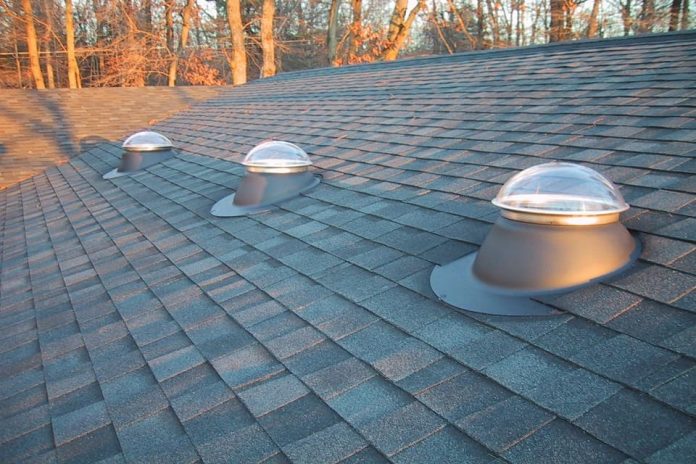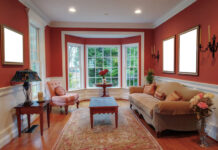There is a lot that one can say regarding the relationship between light and the overall home atmosphere. In essence, the more light you have in your home’s interior, the more open and spacious the rooms will feel. This effect is what makes light such an integral part of interior design. So, to accommodate the need, homeowners, architects and stylists all work diligently to find the best ways to ensure adequate illumination throughout the home.
There are numerous methods of certifying that your home receives all the light necessary to create a feeling of space and openness. The most basic one is through the use of large windows. However, if you are limited to a specific size window, there is an alternative approach. That is by installing skylights instead.
Skylights are window or light-permitting structures whose primary purposes are to provide extra illumination and ventilation. They are installed on the roof, making up part or the entirety of the design. In addition, to allow for light penetration, skylights are made of transparent or translucent glass.
There are two primary types of skylights:
- Tubular skylights
- Traditional skylights
Each type has some defining characteristics which differentiate it from the other. The notes below will give you a clearer idea of the differences between tubular and traditional skylights.
Shape and Installation
Traditional skylights are typically square-shaped or rectangular. In addition, they tend to be larger than tubular skylights. These types allow natural light into the home. They offer a direct sightline to the sky and sun in the daytime and will enable you to gaze at the stunning starry sky at night.
Installation costs for traditional skylights are higher than those of the alternative. However, their aesthetic appeal serves to maintain their popularity with homeowners.
Tubular skylights are primarily an alternate solution in cases where traditional skylights aren’t feasible. As a result, their use corresponds with large roof cavities and attic spaces. These skylight types have a distinct dome shape whose primary purpose is to operate as a solar panel. It captures the sunlight and reflects it down to a diffuser through a mirror tube. From here, the diffuser directs the light into the home’s interior.
While diffusers are smaller than traditional skylights, they are no less effective in providing sunlight, although they do have the added advantage of blocking some of the heat. Moreover, these skylights are not as costly or difficult to install.
Price
It’s widely known that different types of solar panels can be costly, but how do skylights compare? It isn’t easy to make accurate and direct price comparisons between the two skylight types. This discrepancy stems from each variant’s product range, which goes from the most basic to technologically advanced luxury alternatives. As a result, the only way to illustrate the price differences between the two is by referring to their ranges.
So, for instance, tubular skylights that come with a metal tube range between $700 for smaller sized iterations and up to $1200 for the more technologically advanced larger models. On the other hand, traditional skylight prices skew higher, primarily due to the complexity of their installation. Therefore, these types often have a price range of $1500 to $3500.
Energy- Efficiency
As utility prices continue to rise, homeowners become more conscious of their energy production and use. As a result, more households are installing solar panels and other inexpensive renewable energy sources. Nonetheless, an efficient solar panel system is only one step towards low utility costs. Skylights allow natural light into the home’s interior. They enhance the property’s energy efficiency by eliminating the need to switch electric lights on during the day. Therefore, there is no need to rely heavily on the solar panel roof.
So, considering the fact that skylights allow natural light into the home’s interior, they enhance the property’s energy efficiency by eliminating the need to switch electric lights on during the day.
Besides the need for electricity, skylights also help reduce cooling costs. However, this feature is only evident when the tubular type is used. The reason for this is that the diffuser used with this system prevents heat from penetrating the home. So, if you opt for a traditional skylight, you will still have to contend with significant air conditioning and cooling costs.
Water Condensation
Both traditional and tubular skylights will display signs of the accumulation of water condensation over time; in the case of the conventional type, it is the activities that occur inside the home, rather than the outdoor areas, that result in the appearance of condensation. So, it may be wiser and of more benefit to begin using a dehumidifier, mainly if there are frequent instances of steam formation from activities like hot, steamy baths or showers and cooking.
Tubular skylights collect moisture from the environs. In periods of high humidity, condensation will accumulate within the tube and create further problems if left unaddressed. So, to counter this occurrence, it is best to wrap the tube in insulation.
Protection Against UV Rays
The answer to how solar panels work begins with UV rays. Although the rays generate electricity, they can also cause damage. These rays cause furniture and upholstery wear and are harmful to humans as they cause premature aging of the skin, eye damage and skin cancer. Therefore, it is crucial to limit exposure as much as possible.
It is easier to manage exposure to UV rays using tubular skylights than the traditional. This difference stems from the fact that, with the former, the dome’s and diffuser’s effect on the sun’s rays make them less harmful once they get to the room. Contrasting this effect with the latter type makes the difference clear since traditional skylights allow the sun’s rays to shine directly into the interior. In this case, the only countermeasure available is through filtering.
In conclusion, tubular and traditional skylights have one thing in common: they allow you to maximise the available sunlight to decrease your dependence on electricity during the day.
However, the differences between the two types form the matrix that will guide your decision as you select between them. Therefore, it is crucial that you consider each iteration carefully before completing your purchase. And if you require some help in making a choice, you can also seek an expert’s guidance. Their in-depth knowledge will prove valuable in finding the best solar solutions, whether it’s a skylight, solar heater or solar panel installation.



































